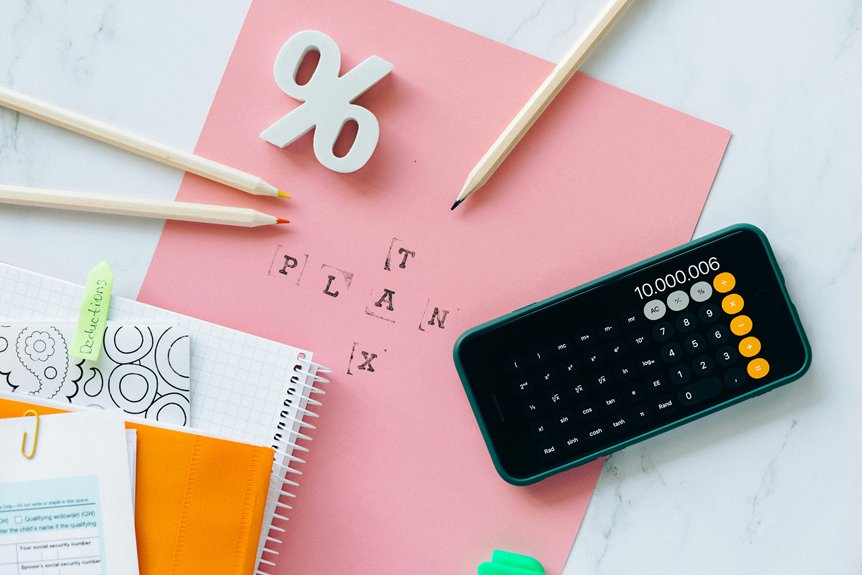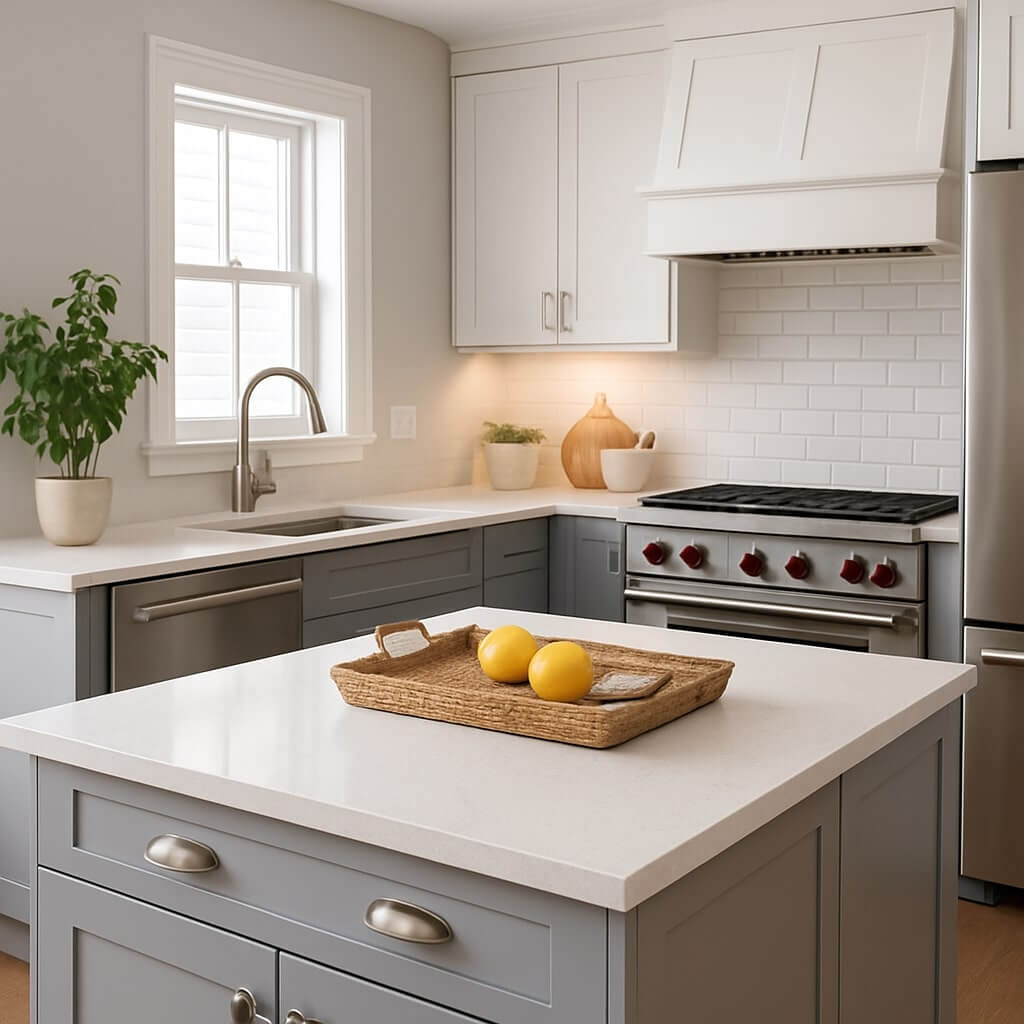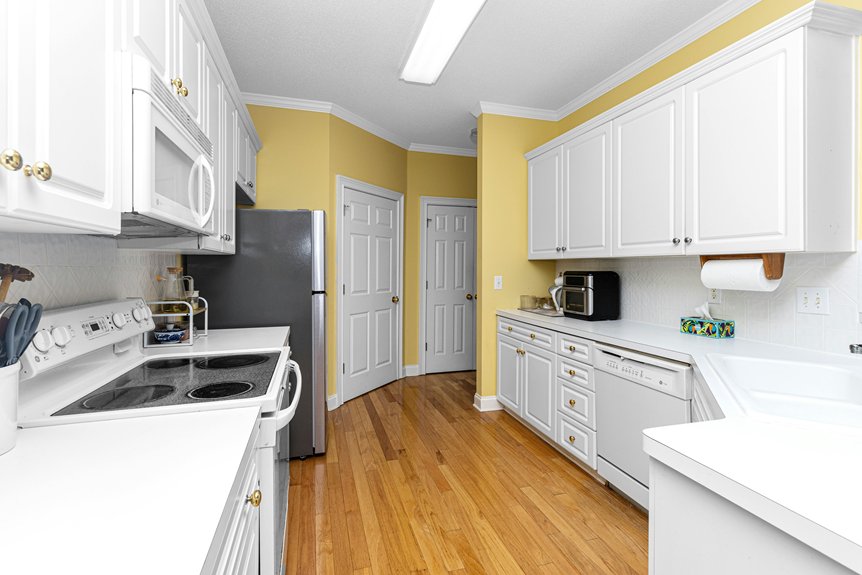Planning a kitchen remodel can be both exciting and overwhelming, especially when it comes to budgeting. You might have a vision in mind, but without a solid financial plan, that dream could quickly turn into a nightmare. Knowing how to prioritize your spending and navigate unexpected costs is vital. Let’s explore seven essential budgeting tips that will help you make informed decisions and keep your project on track.
Key Takeaways
- Set a realistic budget by identifying kitchen priorities and utilizing budgeting tools for expense tracking.
- Distinguish between essential features and luxury items to effectively allocate your budget.
- Gather quotes from multiple suppliers to compare costs and identify potential savings.
- Consider DIY options for tasks you can handle, reducing labor costs and enhancing personal satisfaction.
- Always plan for unexpected expenses by setting aside a contingency fund of 10-15% of your overall budget.
Set a Realistic Budget
When planning a kitchen remodel, setting a realistic budget is crucial to avoid overspending and disappointment.
Start by identifying your kitchen priorities; know what you can’t compromise on and what you can adjust. Utilize budgeting tools, like spreadsheets or apps, to track expenses and keep you organized.
Research costs for materials, labor, and appliances to create a thorough estimate. Factor in a contingency fund for unexpected expenses, typically around 10-15% of your total budget.
Prioritize Your Needs vs. Wants
When planning your kitchen remodel, it’s essential to identify what you really need versus what you simply want.
Start by distinguishing essential features—like appliances and storage—from luxuries like high-end finishes.
Once you’ve made those distinctions, you can allocate your budget more effectively, ensuring you get the most value out of your investment.
Identify Essential Features
Identifying essential features in your kitchen remodel is crucial to staying within budget and ensuring your space meets your needs.
Start by focusing on kitchen functionality—think about how you use your kitchen daily. Prioritize essential appliances like your refrigerator, stove, and dishwasher, as these will greatly impact your cooking experience.
Consider storage solutions, counter space, and layout to maximize efficiency. By distinguishing what you truly need from what you merely want, you can allocate your budget wisely.
Distinguish Luxuries vs. Necessities
After pinpointing the must-have features for your kitchen, it’s time to separate luxuries from necessities.
Focus on essential appliances like your refrigerator and oven; these are vital for functionality.
Then, consider which luxury materials, such as granite countertops or high-end cabinets, truly enhance your cooking experience.
Ask yourself whether these upgrades are worth the extra cost.
Prioritize the essentials first, ensuring your kitchen meets your daily needs.
Once you’ve secured the necessary items, you can assess which luxuries might fit into your budget later.
This thoughtful approach helps you create a stylish yet functional kitchen without overspending.
Allocate Budget Accordingly
As you set out to allocate your budget, it’s essential to prioritize your needs over your wants.
Start by evaluating your kitchen cost essentials like appliances, cabinets, and countertops. Identify what’s necessary for functionality and safety before considering upgrades or luxury finishes.
Create a list ranking items to guide your budget allocation. This way, you guarantee you spend on what truly enhances your kitchen experience.
If funds allow, you can sprinkle in a few wants later, but sticking to your priorities will keep your remodel on track and prevent overspending.
Research and Compare Costs
Before diving into your kitchen remodel, it’s important to research and compare costs, ensuring you stay within your budget.
Start by gathering quotes from multiple suppliers for materials and labor. This cost comparison will reveal where you can save or splurge.
Gather quotes from various suppliers to identify areas where you can save or splurge on your kitchen remodel.
Create a budget analysis by listing all necessary elements, from cabinetry to countertops.
Don’t forget to account for potential hidden costs, like permits or unexpected repairs.
Consider DIY Options
Considering DIY options can save you a significant chunk of your kitchen remodel budget.
Start by evaluating your skills and identifying what tasks you feel comfortable tackling.
Then, research project tutorials to guide you through the process and guarantee you achieve the best results.
Assess Your Skills
Evaluating your skills is an essential step in planning your kitchen remodel, especially if you’re contemplating DIY options. A thorough skill evaluation helps determine what tasks you can tackle confidently and which ones might require professional help.
Consider your experience with carpentry, plumbing, and electrical work; this will guide your project confidence. If you’re comfortable with painting cabinets or installing shelves, those could be great DIY tasks.
However, if you’re unsure about complex tasks like plumbing, it’s wise to hire a pro. By honestly appraising your abilities, you can save money and guarantee a successful remodel tailored to your skills.
Research Project Tutorials
How do you know which DIY projects are right for your kitchen remodel? Start by using effective research methods.
Explore online tutorials, YouTube videos, and blogs that offer step-by-step guidance. Focus on projects that match your skill level and budget.
For better project management, create a list of tasks, timelines, and necessary materials. This helps you stay organized and reduces costs by avoiding mistakes.
Don’t forget to read reviews on the tutorials you find—some might be more helpful than others.
Plan for Unexpected Expenses
While you might’ve a clear budget in mind for your kitchen remodel, it’s important to anticipate unexpected expenses that can arise during the project.
Setting aside an emergency fund is a smart move; aim for at least 10-15% of your overall budget. This cushion will cover unexpected repairs, like plumbing issues or electrical upgrades, that often surface when you’re updating your space.
By planning for these financial surprises, you’ll avoid stress and keep your remodel on track.
Invest in Quality Over Quantity
Unexpected expenses can quickly eat into your remodel budget, making it even more important to focus on quality over quantity.
When you invest in quality materials, you’re not just upgrading your kitchen; you’re making a long-term investment. Durable cabinets, countertops, and appliances may cost more upfront, but they’ll save you money in the long run by reducing the need for repairs or replacements.
Plus, high-quality finishes can elevate your kitchen’s aesthetic, increasing your home’s value.
Track Your Spending Throughout the Project
As you commence your kitchen remodel, keeping a close eye on your spending can make all the difference in staying within budget.
Implement a spending tracker to monitor expenses against your budget. This tool helps you pinpoint where funds are going and adjust as needed.
Set project milestones, like completing the cabinets or countertops, to evaluate your spending at each stage. Regularly reviewing these milestones allows you to identify potential overruns early, ensuring you stay on track.
Conclusion
By following these seven budgeting tips, you can navigate your kitchen remodel with confidence and clarity. Setting a realistic budget and distinguishing between needs and wants will help you make informed decisions. Don’t forget to research costs, consider DIY options, and plan for unexpected expenses. Investing in quality items will pay off in the long run, and tracking your spending keeps your project on course. With careful planning, you’ll create a beautiful kitchen that fits your budget and lifestyle!




